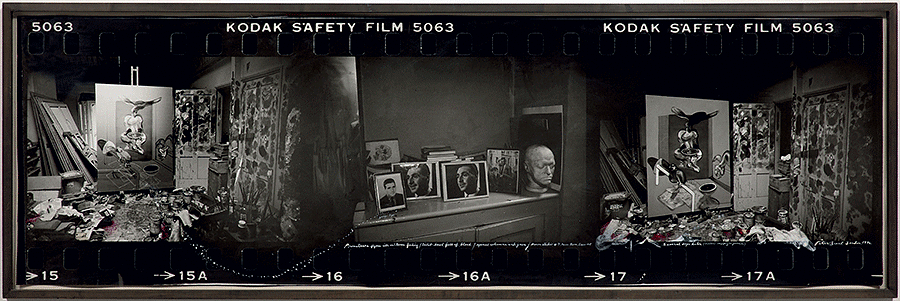Peter Beard, Prometheus figure with vultures feeding . . . Bacon Studio @ 7 Reece Mews, London SW7, 1976. Photographs New York.
Over the course of several days in 1976, Peter Beard captured the creation of Francis Bacon’s monumental Triptych within the splendid chaos of the painter’s famously cave-like London studio in Reece Mews. Epic in scale and masterful in execution, Prometheus figure with vultures feeding . . . Bacon Studio @ 7 Reece Mews, London SW7 also illuminates the deep friendship between the two artists.
The young photographer first met Bacon in 1967 in London at an opening of the painter’s work at Marlborough Gallery. Beard was enormously flattered to find Bacon aware of his 1965 book, The End of the Game, and the two found they had much in common. Out of this encounter grew a remarkably fruitful artistic friendship played out in-person and correspondence, in painted canvases and photographic prints. Bacon posed for Beard’s camera countless times. Beard became a favorite subject for Bacon and appears in numerous paintings. In 1972, Beard recorded a series of conversations with Bacon that became known as the Dead Elephant Interviews, which elicited some of Bacon’s most articulate and thoughtful statements on his art. Excerpts were published in the catalog for Bacon’s 1975 Metropolitan Museum of Art exhibition.
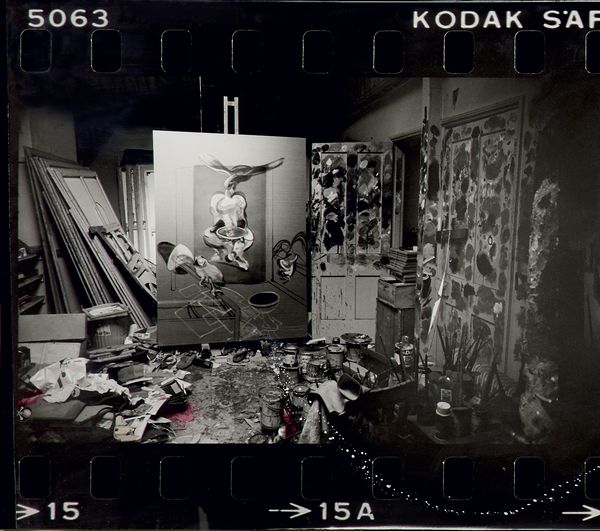
Peter Beard, Prometheus figure with vultures feeding . . . Bacon Studio @ 7 Reece Mews, London SW7 (detail), 1976. Photographs New York.
Beard’s panoramic image consists of three consecutive exposures on a strip of enlarged 35mm film and captures the central panel of Bacon’s lauded Triptych, 1976. The left frame of Beard’s photograph shows the painting at an early stage, with its principal figures in place but not yet fully realized. The right frame shows the panel nearing completion. The central frame of Beard’s photograph shows a display of portraits of Bacon’s recently deceased lover, George Dyer, sitting alongside the life mask of poet and artist William Blake. Taken as a whole, Beard’s multi-panel photograph is a meditation on the passage of time and the inevitability of death, and on the potential of the artistic process to overcome mortality.
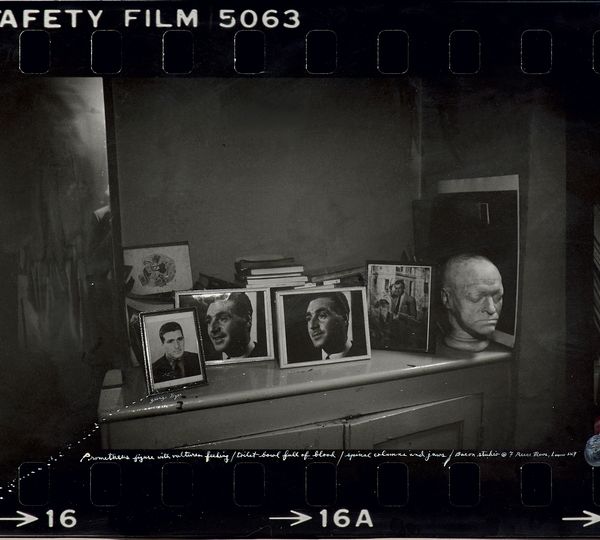
Peter Beard, Prometheus figure with vultures feeding . . . Bacon Studio @ 7 Reece Mews, London SW7 (detail), 1976. Photographs New York.
Bacon began work on Triptych in 1976, intending for it to be the centerpiece of his planned 1977 exhibition at Galerie Claude Bernard in Paris. The menacing presence of the large bird-like creatures in the painting is a reference to the myth of Prometheus, who, after stealing fire for the benefit of mankind, was repeatedly tortured by a vulture sent by Zeus. Not shown are the triptych’s flanking panels, one of which is based upon a self-portrait by Beard with a shaved head. Triptych, 1976 – and by extension Beard’s photograph – serves as a metaphor for the injury and indifference visited upon the visionary artist by a cruel and uncaring world. The triptych is now regarded as one of the principal masterpieces of Bacon’s oeuvre and incorporates dark, existential themes all orchestrated with Bacon’s characteristic mastery. When Triptych, 1976, was sold at auction in 2008 for $86 million, it became the most expensive piece of contemporary art to date.
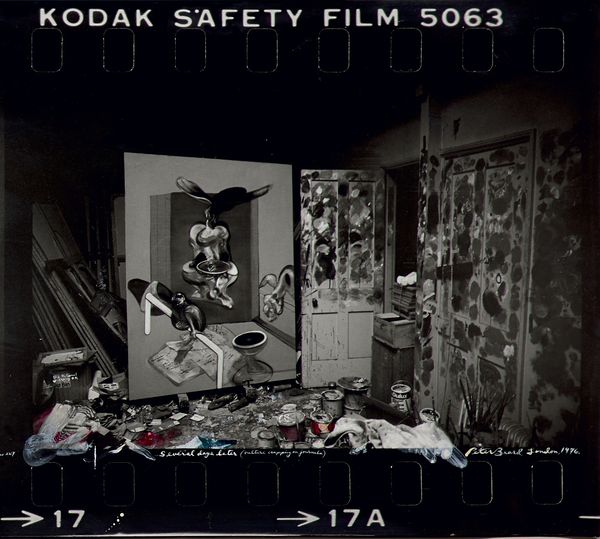
Peter Beard, Prometheus figure with vultures feeding . . . Bacon Studio @ 7 Reece Mews, London SW7 (detail), 1976. Photographs New York.
Beard’s handwritten script on the surface of this photograph provides a commentary on the development of the painting, with its references to Prometheus, vultures, and the departed George Dyer. The collaged elements are characterized by Beard’s puckish sense of humor. A tiny skull and crossbones has been added to the left portion, with the bones replaced by crossed golf tees. In the left portion, a small picture of a model with a radiant smile has been applied, trompe-l’oeil style, to the side of one of the many cans of paint littering Beard’s studio. Beard’s most painterly addition is the graceful sweep of white pigment droplets arcing across the bottom of the image, drawing a direct connection between Bacon’s paint-spattered studio and Beard’s own highly individualized multi-disciplinary process.
Peter Beard and Francis Bacon were both larger-than-life characters whose brilliant public personas were colored with stories of exuberant excess and personal tragedy. Rarely have two artists enriched each other’s work so thoroughly, and the spirit of their collaborative relationship is captured with style and eloquence in this remarkable photograph.
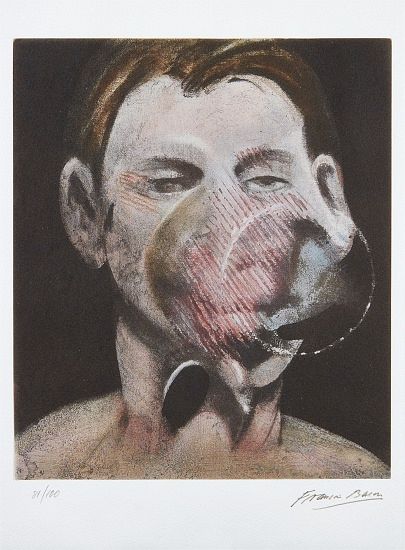
Francis Bacon, Portrait of Peter Beard, 1976. Evening & Day Editions.
Discover More from Photographs >
Recommended Reading
